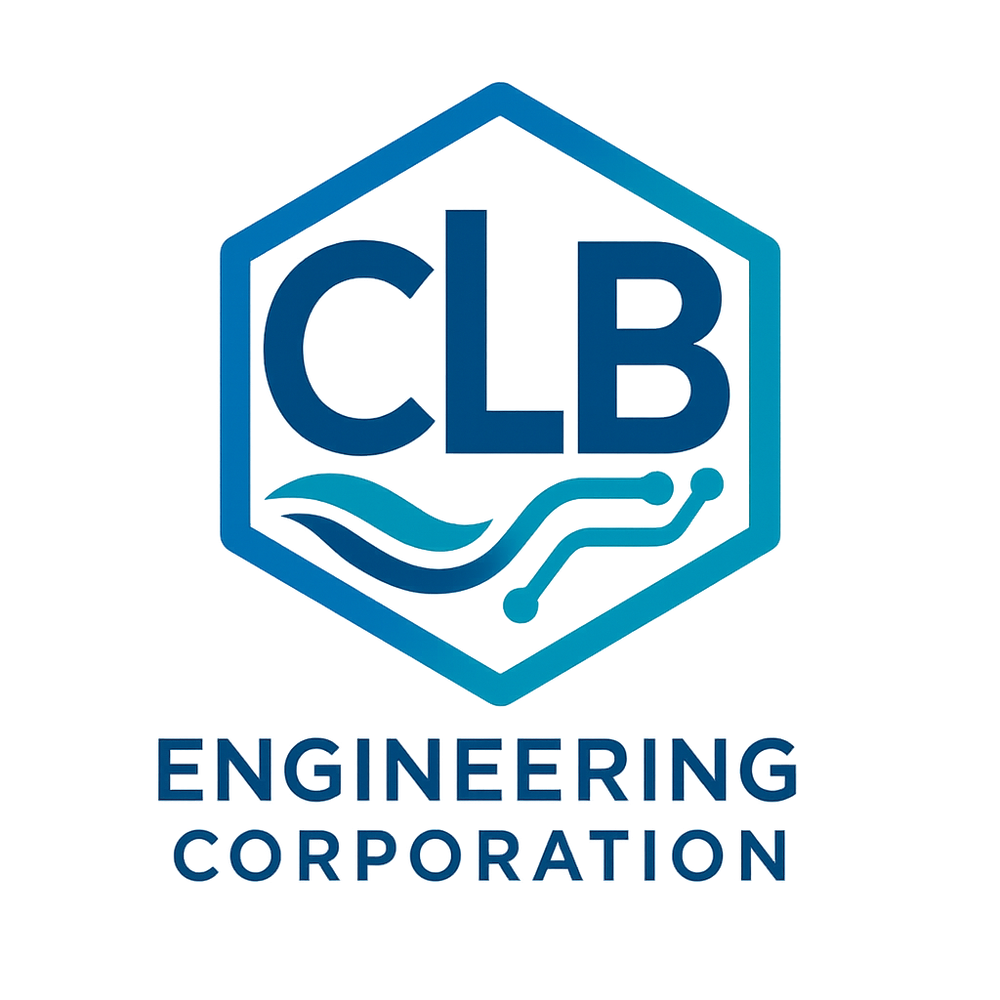Engineering With Large Language Models
William Mark Katzenmeyer, P.E., C.F.M.
AI/LLM Innovator and H&H Modeling Expert
About Me
Current Role: CLB Engineering Corporation
LLM-Forward: A New Engineering Paradigm

The LLM-Forward approach represents a fundamental shift in how engineering firms can leverage AI technology. Unlike "AI First" approaches that may compromise professional responsibilities, LLM-Forward maintains humans in the loop while positioning Large Language Models as powerful tools for innovation and efficiency.
This philosophy, which I've articulated in detail on LinkedIn and implemented at CLB Engineering, focuses on:
- Maintaining professional licensure and liability requirements
- Using LLMs to augment, not replace, engineering judgment
- Creating verifiable, reproducible results
- Building ethical AI implementations with proper oversight
This approach has already proven successful through the development of RAS-Commander, HEC-Commander tools, and numerous client implementations.
RAS-Commander Library NEW
Comprehensive Library Guide
Complete documentation of RAS-Commander's features, modules, classes, and usage patterns, including best practices and troubleshooting tips for effectively leveraging the library in your projects.
View Comprehensive Library GuideExample Notebooks with Results
A collection of Jupyter notebooks demonstrating RAS-Commander capabilities, from basic project initialization to advanced parallel execution, with complete working examples using HEC-RAS sample projects.
Review Example NotebooksLLM Knowledge Bases
Purpose-built summaries of the codebase and documentation optimized for use with Large Language Models like Claude, ChatGPT, and Gemini, enabling AI-assisted coding and workflow development.
Explore Knowledge BasesChatGPT Assistant
A specialized ChatGPT model with access to the RAS-Commander codebase, capable of answering queries, providing code suggestions, and helping analyze HEC-RAS files and results data.
RAS-Commander Library GPTGitHub Repository
Access the complete source code, documentation, and development tools for RAS-Commander on GitHub. Star the repository to receive updates on new features and improvements.
RAS-Commander Libraryon GitHubHEC-Commander Tools
RAS-Commander 1.0 Notebook
Python notebook built to support HEC-RAS automation with parallel execution of HEC-RAS unsteady plans and construction of plan files, with the option of utilizing DSS inputs to build iterative plans. Supports both 1D and 2D model formats and 2D infiltration overrides.
View RAS-CommanderHMS-Commander Notebook
Python notebook for HEC-HMS that enable generation of multiple DSS output files with user-defined calibration parameters. Supports 1D HEC-RAS calibration and validation workflows using deficit and constant loss methods with optional recession baseflow.
View HMS-CommanderDSS-Commander Notebook
Python notebook for plotting 1D HEC-RAS results from DSS against gauge results, creating zoomable HTML plots with Bokeh. Calculates calibration statistics (RMSE, r, PBIAS, NSE) for each plotted location.
View DSS-CommanderChatGPT Examples for Water Resources
A collection of specialized GPTs designed for Water Resources Engineers. Each GPT offers unique functionalities and knowledge bases, ranging from document compilation and flood damage estimation to GIS assistance and script translation.
Explore GPTsHEC-Commander Blog
Technical articles on water resources engineering, including topics like "Avoiding The Bitter Lesson in HEC-RAS Modeling," "Deep Dive: HEC-RAS 2D Infiltration," and "Balancing Accuracy, Resolution, and Efficiency in Large-Scale HEC-RAS Modeling."
Read BlogFeatured Media Appearances
Instructional Videos
RAS Commander 2D Demo with Infiltration Overrides
Demonstration of HEC-RAS 2D automation functionality with infiltration override capabilities
RAS Commander 1D Demo
Step-by-step demonstration of using RAS-Commander for 1D HEC-RAS model automation
GPT-Commander YouTube Channel
Access all instructional videos, demonstrations, and tutorials for HEC-Commander tools
Visit YouTube ChannelPresentations & Appearances
ASFPM 2025 Conference (Upcoming)
Session D2: "RAS Commander: Unlocking the Future of HEC-RAS with AI-Powered Automation" - Wednesday, May 21, 10:30AM-noon
Presenting a 30-minute introduction to the RAS-Commander library, a comprehensive replacement for the HECRASController for HEC-RAS 6.x. This session will provide an overview of the library, its development process, example notebooks, and techniques for leveraging the library to automate workflows.
Workshop: "Data Management with ChatGPT and Python" - Sunday, May 18, 1:00PM-5:00PM CST
Co-presenting this hands-on 4-hour workshop with Karen O'Brien and Robson Leo Pachaly, Ph.D. from FLO-2D. Participants will learn to use ChatGPT, Python, QGIS, and Jupyter Notebook to streamline flood modeling data workflows. The workshop includes HEC-RAS automation content featuring the RAS-Commander library.
CLB Engineering will have a presence throughout the conference. Attendees can find me to discuss RAS-Commander implementations, LLM-Forward engineering approaches, or partnership opportunities.
ASFPM 2025 Conference ScheduleWEF Webinar: AI/ML Through A Watershed Lens
February 18, 2025
Discussion on how to apply LLMs in engineering practice through a watershed lens, exploring the broad innovation surface of LLMs and approaches to use in professional practice.
View WEF PresentationASFPM 2024
Presented HEC-Commander Tools and AI-assisted scripting at the Association of State Floodplain Managers (ASFPM) Annual Conference in Salt Lake City on June 27, 2024.
View Presentation PDFCAFM 11th Annual Conference – November 13, 2024
CAFM 11th ANNUAL CONFERENCE: The Connecticut Association of Flood Managers (CAFM) convened its 11th Annual Conference and Meeting at the Student Center at Central Connecticut State University in New Britain, Connecticut on November 13, 2024.
I spoke at this conference on leveraging AI-assisted scripting for HEC-RAS and HEC-HMS automation. The links below provide access to the event details and my presentation PDF.
CAFM 11th Annual Conference View Presentation PDFLouisiana Floodplain Management Association (LFMA) Conference – March 31, 2023
Presented on "FEMA Benefit Cost Analysis Tool 6.0: 2022 Updates in Review" at the LFMA 2023 Annual Conference. The presentation covered significant updates to the FEMA BCA 6.0 tool, including the 3% discount rate for FMA/BRIC projects, 2022 sea level rise updates, green infrastructure calculators, and ecosystem service values.
Topics addressed included strategies for dealing with construction cost inflation, utilizing sea level rise data in coastal mitigation planning, and improvements to ecosystem service valuations for wetlands, beaches, and forests.
View Presentation PDFArticles and Additional Resources
Louisiana ASCE Journal Article - November 2024
Published article titled "Emergent Uses of Large Language Models in Civil Engineering" in the Louisiana ASCE Journal, exploring practical applications and innovative approaches for integrating LLMs into civil engineering workflows.
Read ArticlePremium Course: AI Applications to HEC-RAS
A comprehensive 6-hour course on applying AI to HEC-RAS workflows, developed for the Australian Water School.
View CourseHEC-Commander YouTube Channel
Instructional videos to accompany the HEC-Commander repository, providing step-by-step tutorials and demonstrations.
Visit ChannelBlog Details: Avoiding The Bitter Lesson in HEC-RAS Modeling
This article draws parallels between breakthroughs in AI and computational challenges in hydraulic modeling, particularly in the 2D modeling era post version 6.0. It explores how scaling through parallelism and brute force can lead to significant improvements in modeling efficiency.
Read ArticleBlog Details: Courant Rules Everything Around Me
This article highlights the need for balancing cell size and time step in large scale HEC-RAS models, as well as common pitfalls of over-reliance on adaptive timestep. Essential reading for anyone with a model that takes more than 24 hours to run.
Read ArticleProfessional Affiliations

CLB Engineering Corporation
Co-Founder & Principal Engineer
Leading the LLM-Forward transformation of engineering practice through ethical AI integration and open-source innovation.
Visit CLB EngineeringOpen Source Contributions
Active maintainer and creator of:
- RAS-Commander Library
- HEC-Commander Tools Suite
- Various ChatGPT assistants for engineering
LLM-Forward Philosophy
Author of the LLM-Forward approach to engineering practice, advocating for responsible AI adoption that maintains professional standards while leveraging cutting-edge technology.
Read on LinkedIn







